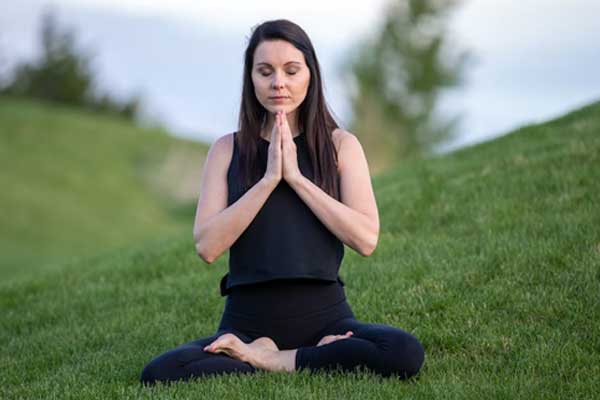Yoga Nidra has been a powerful technique for centuries to promote deep relaxation and inner peace.
In this article, I will discuss the benefits of practicing Yoga Nidra, its science, its connection to meditation, and how to incorporate it into your daily practice.
Introduction to Yoga Nidra
Yoga Nidra, known as yogic sleep, is a meditation that promotes deep relaxation and rejuvenation.
Unlike other yoga practices, Yoga Nidra is done lying down, making it accessible to anyone, regardless of their physical abilities.
The practice involves deep relaxation techniques that take you into a state of consciousness between waking and sleeping, where you are fully aware of your surroundings. Still, your body is in a state of deep relaxation.
The Benefits of Practicing Yoga Nidra
The benefits of practicing Yoga Nidra are numerous. It can help reduce stress, anxiety, depression, and insomnia.
It also promotes deep relaxation, which can help lower blood pressure and reduce chronic pain.
Additionally, Yoga Nidra can help improve focus, memory, and creativity. It is an excellent tool for anyone looking to improve their overall well-being.
The Science behind Yoga Nidra
The science behind Yoga Nidra is fascinating. When we are in deep relaxation, our brain waves slow down, and we enter a state of consciousness known as the alpha state.
This state is associated with relaxation, creativity, and visualization. Yoga Nidra takes us even deeper into a state of consciousness known as the theta state.
This state is associated with deep meditation, intuition, and creativity. In this state, our brain waves slow down even further, and we become deeply relaxed.
How to Practice Yoga Nidra
Practicing Yoga Nidra is easy. Find a quiet place to lie down and get comfortable.
You can use a yoga mat, blanket, or other props to feel comfortable. Close your eyes and focus on your breath.
Then, follow the instructions of the Yoga Nidra teacher or use a guided meditation. The practice typically lasts between 20 and 45 minutes.
Tips for a Successful Yoga Nidra Practice
There are a few tips to remember for a successful Yoga Nidra practice.
- Find a quiet and comfortable place where you won’t be disturbed.
- Use a guided meditation or a teacher to guide you through the practice.
- Be patient with yourself. It may take some time to get into a deep state of relaxation.
- Try to practice at the same time every day to create a habit.
The Different Stages of Yoga Nidra
Yoga Nidra has several stages that take you deeper into relaxation. The first stage is relaxation, where you focus on relaxing each body part.
The second stage is visualization, where you visualize different things, such as a peaceful place, a healing light, or a positive affirmation.
The third stage is intention-setting, where you set an intention for your practice.
The fourth stage is surrender, where you relinquish expectations and surrender to the practice.
The fifth stage is coming out of the practice, where you slowly return to the present moment.
Yoga Nidra and its Connection to Meditation
Yoga Nidra is often compared to meditation. While both practices promote relaxation and inner peace, they have some key differences.
Meditation involves focusing on your breath or a mantra, while Yoga Nidra involves deep relaxation techniques and visualization.
Both practices can complement each other and help you achieve more profound relaxation and inner peace.
Yoga Nidra vs. Traditional Yoga
Yoga Nidra differs from traditional yoga practices like Hatha or Vinyasa yoga.
In traditional yoga, you move through a series of postures, while in Yoga Nidra, you lie down and focus on relaxation techniques.
Traditional yoga can be physically challenging, while Yoga Nidra is accessible to anyone, regardless of physical abilities.
Frequently Asked Questions about Yoga Nidra
- Can anyone practice Yoga Nidra? Yes, anyone can practice Yoga Nidra, regardless of their physical abilities.
- How often should I practice Yoga Nidra? You can practice Yoga Nidra as often as you like, but it is recommended to practice at least once a day.
- How long does a Yoga Nidra practice last? A typical Yoga Nidra practice lasts between 20 and 45 minutes.
- Can Yoga Nidra help with anxiety and depression? Yes, Yoga Nidra can help reduce symptoms of anxiety and depression.
Conclusion and Final Thoughts
Yoga Nidra is a powerful technique that can help promote deep relaxation and inner peace.
It is accessible to anyone, regardless of physical abilities, and can be practiced anywhere.
Incorporating Yoga Nidra into your daily practice can reduce stress, anxiety, and depression and improve overall well-being.
Give it a try and unleash your inner zen. Start incorporating Yoga Nidra into your daily practice and experience the benefits for yourself.
